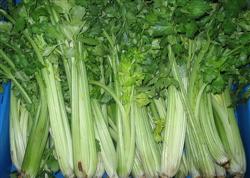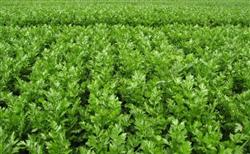Planting technique of Portulaca oleracea
Purslane can be used for food and cooking, and it is a variety that can be seen in many places in the countryside, but it is rare in the wild because it has been seriously picked in the wild in recent years. At present, Portulaca oleracea has a good economic value, so the artificial planting scale is expanding, so how to plant purslane? Next, let's learn about it with the editor.

1. Methods of reproduction
Portulaca oleracea is a kind of herb with strong vitality. There are two main ways of reproduction, one is to use seeds to reproduce, and the other is to insert rod propagation, each of which has its own advantages. Seed propagation is more in line with the current situation of large-scale artificial propagation, and inserting requires certain technology, but high-quality varieties can be selected to achieve high-quality training effect. If you plan to plant in a large area, it is recommended to use seeds, which is beneficial to the overall management.
2. Transplant management
The successful cultivation of the first two methods requires transplantation. Generally, transplantation can begin after 2-3 weeks, when the seedlings are just the most suitable for transplantation, the root system is developing steadily, and the survival rate after transplantation will be very high. The transplanted soil should prepare fertilizer in advance, and the sandy and breathable soil is the best. After transplanting, you need to irrigate a little water, not too much, and be able to moisten the topsoil. The spacing of each plant is controlled at 20-30 cm, so that it can grow like four weeks and increase yield.
3. Planting management
The management after transplantation pays more attention to fertilizer and water, because there are relatively few weeds in purslane. Because it is a herbaceous plant, urea is recommended for fertilization, which is conducive to the rapid growth of its roots and branches. Generally speaking, there is no fertilization before the first harvest, so the initial base fertilizer should be applied more, controlled at about 2500 jin per mu, and a small amount of farm manure can be released in the later stage. Water application is recommended once every 3-7 days, it can be added or subtracted according to the situation, and each time the amount of water is controlled to infiltrate into a 2-3 cm soil layer.
4. Points for attention in picking
Purslane is a crop that has been picked for a long time, so be careful not to overdo it each time, so that it can grow better next time. When picking, try to pick only the most tender branches and leaves, and reserve about 4-5 nodes for the rhizome. The growth cycle of Portulaca oleracea is about 2-3 weeks after the first picking. It is necessary to pick it in time. Picking too late is not conducive to subsequent growth.
The above is the general process of purslane planting, the current market price of purslane still has a good profit, we can consider this aspect. Purslane diseases and insect pests are relatively rare, we do not need to worry too much about the economic losses caused by insect pests, which is also an advantage of purslane cultivation.
- Prev

Herbicide is suitable for celery growing period
Celery cultivated by conventional method has high fiber content, and its stem is often hard due to poor management or untimely harvest, which affects the commodity value and even loses its edible value. According to the successful experience of some vegetable farmers for many years, a set of celery tenderization cultivation methods was adopted, which not only reduced the stem fiber content, but also increased the edible and...
- Next

Technology of accelerating germination of celery seed in high temperature season
The optimum temperature for celery seed germination is 15-25 ℃, but it is difficult to germinate when it exceeds 30 ℃. Sowing celery in high temperature season can take the following methods to deal with seeds to promote neat germination. Soak the seeds in clean water for 24 hours after 1 day of variable temperature treatment, change the water every 8 hours, then remove, wash and wrap them with wet gauze and put in 5 ℃.
Related
- Where is it suitable to grow horseradish in China? it is expected to see the middle altitude horseradish in Alishan.
- How to prevent tomato virus disease reasonably? (Control methods included)
- Many people like to plant towel gourd on the balcony. What are the main points of this method and management?
- What crops can chili peppers be mixed with?
- Fertilization techniques and matters needing attention in Tomato
- What are the grafting techniques for peach seedlings in spring?
- Harm and control methods of root swelling disease of Chinese cabbage
- What are the pests of sweet potatoes? How to prevent and cure it?
- Symptoms, causes and Control methods of navel Rot in Tomato
- The cause of "Cucumber rotten bibcock" in Farmers' planting Cucumber and its Control Plan

